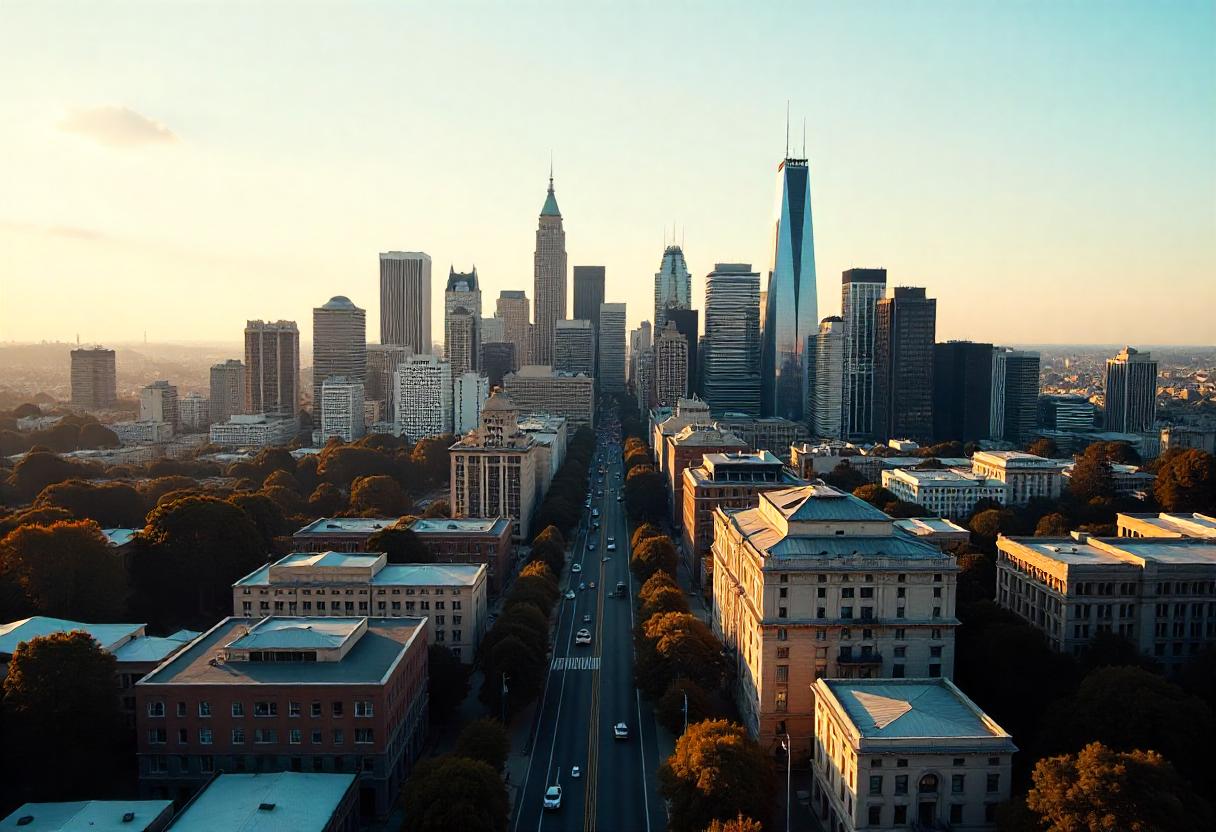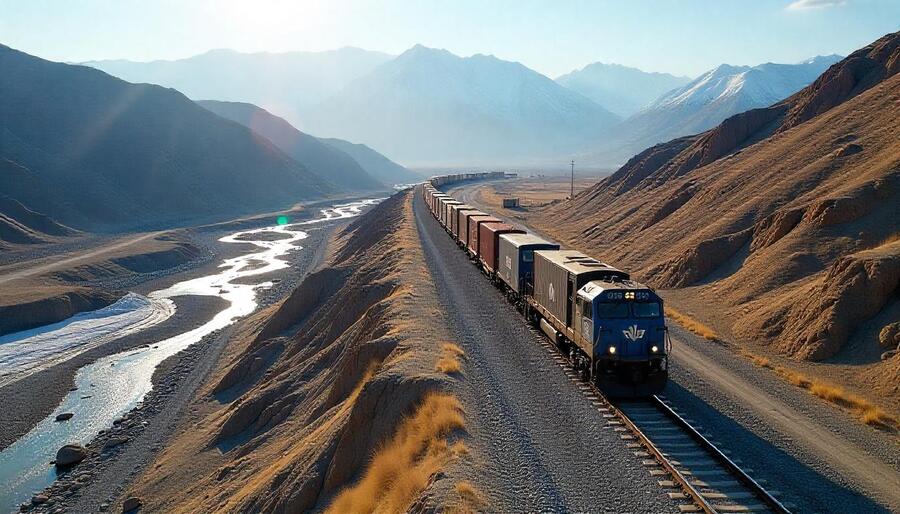≡-Now, Colorado Joins Tennessee, New Mexico, Utah, Illinois, Massachusetts in Preparing to Attract More US Tourists This July Fourth Independence Day, What is New in This – Viral of Today
<> Viral of Today <>
Home » America Travel News » Now, Colorado Joins Tennessee, New Mexico, Utah, Illinois, Massachusetts in Preparing to Attract More US Tourists This July Fourth Independence Day, What is New in This Sunday, June 29, 2025Colorado joins Tennessee, New Mexico, Utah, Illinois, and Massachusetts in a bold new push, preparing to attract more US tourists this July Fourth Independence Day. And something big is brewing. One by one, Colorado, Tennessee, New Mexico, Utah, Illinois, and Massachusetts are rolling out fresh plans. They’re determined to attract more US tourists this Independence Day. Yet what’s new this year? And why are these states pulling out all the stops?Moreover, July Fourth isn’t just another holiday—it’s prime time for travel. This year, the stakes feel higher. These states sense an opportunity. They’re crafting experiences, sharpening promotions, and racing to be first in tourists’ hearts. So, what surprises await in Colorado, Tennessee, New Mexico, Utah, Illinois, and Massachusetts? And how exactly do they plan to attract more US tourists this July Fourth Independence Day?Stay tuned. This summer travel story is only getting started—and it’s packed with unexpected twists.Colorado Faces Tourism Chill in 2025: Can Innovation Turn the Tide?Colorado’s tourism industry, long a golden goose for the state economy, is navigating an unexpected chill as summer 2025 unfolds. After a record-shattering 2023 that brought in $28.3 billion from nearly 93.3 million visitors, this year’s story is different. Bookings are down, international visitors are scarce, and mountain towns are revising budgets to brace for leaner months.Yet amid the slump, the state is deploying creative strategies—from fresh domestic campaigns to heartfelt international outreach—to lure travelers back. Here’s why Colorado’s tourism downturn matters, and how leaders hope to reverse it.A Record High Followed by UneaseIn 2023, Colorado was riding high. Tourists flooded the state’s cities, mountain resorts, and rural gems, fueling hotels, restaurants, and adventure businesses. But by early 2025, cracks began appearing in the mountain paradise.Mountain resort occupancy has fallen 5.9% statewide compared to last year. Even the lucrative summer months of July and August are pacing behind, with bookings down 7.1% overall. Some iconic destinations, like Breckenridge, anticipate 10% fewer visitors, translating to a 7% dip in lodging tax revenue—a vital stream for local budgets.This sudden drop follows a broader national trend: after the post-pandemic “revenge travel” surge, travelers are tightening belts. Inflation, global tensions, and political rhetoric have collectively cooled the travel fervor.International Visitors: The Missing PieceOne of the most striking factors behind Colorado’s slump is the sharp decline in international tourism.Canadian visitors—a historically robust market—are down over 55%. Western European travel has dropped roughly 35%. Industry insiders blame economic headwinds, political uncertainty, and America’s shifting global image for keeping would-be tourists at home.“International travelers are the high-spenders,” said one Vail tourism official. “They book longer stays, spend more on experiences, and contribute disproportionately to our economy. Losing them hits hard.”Breckenridge, Aspen, and other luxury mountain towns feel the squeeze most, as they’re tailored to international visitors who indulge in multi-day ski trips or summer adventures.Rising Prices and Environmental ConcernsAdding fuel to the downturn are cost pressures. Average lodging rates across Colorado have risen between 1.5% and 5.3%, further deterring price-sensitive travelers. While high-end tourists may not blink at steeper rates, mid-market visitors are increasingly cautious.Meanwhile, environmental challenges cast shadows over Colorado’s natural playground. Droughts have impacted river levels, crimping rafting and fishing tours in some regions. Wildfire risks loom, deterring visitors worried about smoky skies or sudden evacuations.For rural communities that rely on outdoor tourism, these threats are more than seasonal hiccups—they’re existential questions.Colorado Fights Back with New StrategiesDespite the slump, Colorado isn’t surrendering. Instead, tourism officials and local businesses are retooling how they market the state’s diverse offerings.Pivot to Domestic TravelersWith fewer international guests, Colorado is doubling down on domestic audiences. Marketing now highlights road-trip getaways, proximity for Front Range residents, and budget-friendly experiences. Instead of selling purely luxury ski holidays, campaigns tout weekend escapes and unique local attractions.“We want Coloradans and nearby states to see Colorado not just as a winter destination,” said a representative from the Colorado Tourism Office. “There’s so much more—summer festivals, arts, outdoor recreation, even agritourism.”Wooing Canada with CharmColorado isn’t giving up on international visitors either. In February, the Colorado Tourism Office hosted a “Colorado Loves Canada 2025” event in Toronto, complete with cocktail demos and presentations about sustainable travel. The message was clear: Colorado wants Canadian travelers back, tariffs and political tensions aside.Aspen and Snowmass have also been strategizing new international packages—bundling skiing with other experiences to make trips more attractive and cost-effective.Towns Reworking Budgets and ExpectationsMountain towns are also bracing for tighter days ahead. Communities like Breckenridge are revising budgets to reflect lower tax revenues, adopting “sensitivity analyses” to plan for worst-case scenarios. Some are slowing capital projects to ensure financial stability.“Tourism is the lifeblood of these towns,” said a town council member in Summit County. “But we can’t assume the tap will always flow at the same speed. We have to plan smarter.”The Road Ahead: Optimism vs. RealityWhile the numbers signal caution, Colorado’s tourism leaders remain cautiously optimistic. Domestic travel is still robust, and urban centers like Denver continue to see high volumes of visitors spending big on lodging, food, and entertainment.The ultimate question is whether Colorado’s creative outreach—and its inherent appeal as a four-season playground—can overcome global uncertainties and economic headwinds.One thing remains certain: even amid a tourism chill, the state’s mountains still stand tall, rivers still shimmer under summer sun, and Colorado remains, at its heart, an invitation to adventure.Colorado Calling: Your Ultimate Guide to the Centennial State’s Attractions, Theme Parks, and Luxe RetreatsFor decades, Colorado has beckoned travelers with its shimmering peaks, crisp alpine air, and a magnetic blend of urban sophistication and untamed wilderness. Now, as U.S. and Canadian travelers search for meaningful escapes in 2025, the Centennial State stands ready to deliver, offering everything from pulse-quickening adventure parks to hushed luxury retreats hidden in pine-scented valleys.Whether you’re seeking thrilling rides, cultural treasures, or five-star spas perched at 10,000 feet, Colorado invites you to come closer. Let’s dive into why this state remains one of North America’s most alluring destinations.Rocky Mountain Majesty: Natural Wonders that Steal the ShowFor many visitors, Colorado’s landscapes are the first—and often the lasting—reason they fall in love. At the heart of it all lies Rocky Mountain National Park, just an hour and a half from Denver. Here, peaks soar over 14,000 feet, alpine lakes mirror sky-high clouds, and wildlife—including elk and bighorn sheep—graze in meadows dappled with wildflowers.Popular drives like Trail Ridge Road, the highest continuous paved highway in North America, offer jaw-dropping panoramas and make for a perfect day trip for Canadians and Americans craving cinematic views without straying too far from civilization.Closer to Colorado Springs, Garden of the Gods astounds with towering red sandstone formations, a geologic spectacle that’s free to visit and beloved for hiking, photography, and rock climbing.Theme Parks: Adventure for All AgesWhile Colorado’s natural playground is unmatched, thrill-seekers and families find plenty of modern excitement in its theme parks. Take Elitch Gardens Theme & Water Park in Denver, where heart-pounding roller coasters share space with water slides perfect for cooling off under the summer sun. Though smaller than some national giants, Elitch Gardens charms with manageable crowds and skyline views.Further south in Canon City, Royal Gorge Bridge & Park isn’t just a theme park—it’s a marvel of engineering. Brave souls can walk across one of the world’s highest suspension bridges or dare to ride the aerial gondola above the Arkansas River gorge, 956 feet below. For adrenaline junkies, the park’s Skycoaster swings riders out over the canyon’s edge—a thrill that’s equal parts terror and exhilaration.And don’t overlook Glenwood Caverns Adventure Park in Glenwood Springs, where cave tours, mountaintop rides, and Colorado’s only alpine coaster combine into a one-of-a-kind mountaintop amusement park. For Canadian families accustomed to Niagara Falls or Banff attractions, Glenwood Caverns offers that same mix of natural wonder and family-friendly fun—just a bit higher up.Urban Allure: Cities with a Rocky Mountain TwistColorado’s cities, particularly Denver and Boulder, have matured into sophisticated cultural hubs that appeal strongly to U.S. and Canadian urban travelers.Denver pulses with creativity, from art galleries in the Santa Fe Arts District to innovative dining in LoDo. The recently expanded Denver Art Museum is a must-see, housing a standout Indigenous Arts collection. Meanwhile, craft beer aficionados will find heaven in Denver’s taprooms—Colorado ranks among the top states for craft breweries per capita.Nearby, Boulder charms with a more laid-back vibe, where Pearl Street’s pedestrian mall brims with artisan boutiques, street performers, and farm-to-table dining. It’s the perfect urban escape before heading into the wilderness.Luxury Lodging: Where Wilderness Meets IndulgenceColorado’s luxury hospitality scene has boomed over the past decade, positioning the state firmly on the radar of high-end travelers from both the U.S. and Canada.The Broadmoor, Colorado SpringsAn icon since 1918, The Broadmoor is as classic as luxury gets. Think grand architecture, manicured grounds, and a setting near Pikes Peak that feels lifted from a vintage travel poster. Guests indulge in everything from championship golf to falconry lessons, not to mention the spa treatments that soothe muscles after mountain adventures.Hotel Jerome, AspenAspen’s Hotel Jerome, part of the Auberge Resorts Collection, balances historic Western charm with modern luxury. The lobby is a masterpiece of leather, velvet, and rustic wood, while rooms feature plush comforts perfect for unwinding after skiing Aspen’s famed slopes. For Canadian skiers used to Whistler, Aspen’s high-altitude glamour offers an intriguing alternative.Dunton Hot SpringsFor those seeking seclusion, Dunton Hot Springs near Telluride is a dreamy escape. This restored 19th-century mining town has been transformed into a private luxury resort. Cabins are exquisitely appointed with handcrafted furnishings, and the hot springs themselves are nothing short of magical, especially under a canopy of stars.Attractions Tailored for Canadian and U.S. TravelersOne reason Colorado resonates so strongly with North American visitors is its accessibility and diversity. Canadians, in particular, find it familiar yet distinct—a place where mountain culture mirrors the Rockies back home but with a Southwestern flair.Scenic Railways, like the Durango & Silverton Narrow Gauge Railroad, captivate history buffs and families alike. The journey weaves through dramatic mountain terrain that feels almost cinematic.Meanwhile, Vail and Beaver Creek are evolving beyond winter. Summer brings wildflower hikes, open-air concerts, and events like the GoPro Mountain Games, drawing both elite athletes and curious spectators.Why Colorado CaptivatesThe enduring magic of Colorado lies in how seamlessly it blends experiences. One moment, you’re sipping craft cocktails in a Denver rooftop bar; the next, you’re soaking in a mountain hot spring beneath endless stars. You can climb dunes at Great Sand Dunes National Park, attend a festival in Telluride, or retreat into luxury where eagles soar overhead.For U.S. and Canadian travelers yearning for something beyond the ordinary, Colorado offers a canvas as broad as its skies—and an invitation to keep exploring, one summit or spa treatment at a time.Stars, Stripes, and Summits: Colorado’s Grand July 4th Welcome in 2025As summer unfurls its bright wings over the Rocky Mountains, Colorado is donning its festive best and getting ready for a show-stopping Fourth of July. In a state where jagged peaks scrape the skies and city streets pulse with culture, Independence Day isn’t just another holiday—it’s a dazzling convergence of tradition, adventure, and high-altitude Americana.This year, as we step into July 2025, the Centennial State is bracing for one of the busiest holiday weekends in recent memory. Tourism insiders are predicting that over 72 million Americans will hit the roads and skies nationwide, with Colorado poised to grab a generous slice of that summer travel pie. Whether you’re drawn by urban fireworks or mountain-town magic, the state is rolling out the red, white, and blue carpet—and everyone’s invited.Urban Sparks and Rooftop RevelryLet’s start where the skyline glitters brightest: Denver. The Mile High City is a fireworks lover’s dream, and this year promises no exception. With 37.1 million visitors already having passed through Denver in the past year, the city is primed for crowds hungry for celebration—and plenty of barbecue.Downtown hotels, many offering rooftop views, are bracing for full houses. Over 51,000 hotel rooms now serve Denver, with a significant cluster near the Convention Center, ready to host families, festival-goers, and out-of-towners in search of prime fireworks vantage points. Visitors can expect bustling craft breweries, live music spilling onto sidewalks, and a festive buzz pulsing through Union Station and the historic LoDo district.Greeley Stampede: Where Cowboy Hats Meet FireworksNo Colorado Independence Day would be complete without tipping a hat to cowboy country. North of Denver, Greeley is prepping its legendary Greeley Independence Stampede—a wild blend of rodeo thrills, concerts, parades, and carnival rides. This isn’t just a local fair; it’s a mammoth affair drawing nearly 450,000 attendees each year, all eager for the crack of bullwhips and the shimmer of fireworks.For travelers craving authentic Americana, the Stampede is the place to be. Rodeo dust swirls into the sunset, country stars light up the stage, and fireworks blossom above the arena. It’s pure Colorado spirit, where cowboy boots and freedom rings walk hand in hand.Mountain Towns Ready for the SpotlightWhile city lights dazzle, many travelers will be steering their cars—and their hearts—toward Colorado’s high country. From Vail to Breckenridge, mountain towns are preparing for waves of holiday visitors with open trails, music festivals, and fireworks against alpine silhouettes.In Vail, the summer season is already in full swing, thanks to events like the GoPro Mountain Games in June and the ongoing Summer Sessions concerts. Copper Mountain and Keystone are transforming ski slopes into summer playgrounds, with alpine slides, mountain biking trails, and gondola rides revealing panoramic vistas.These mountain resorts have become Colorado’s summer beach towns—only with pine trees instead of palm trees. Families are trading surfboards for hiking boots, eager for cool mountain air and a front-row seat to spectacular pyrotechnics reflected off snowy peaks.Glenwood Springs: History and HarmonyNestled along the Colorado River, Glenwood Springs is leaning into both history and hospitality this Fourth of July. The historic Hotel Colorado is orchestrating an Independence Day lineup with live music from guitarist Rodrigo Arreguin—a perfect pairing for a town known for its soothing hot springs and Victorian charm.Visitors can soak in mineral-rich waters by day and sway to live tunes in the hotel’s picturesque courtyard by night. Fireworks above Glenwood Canyon cap off the experience, leaving guests wrapped in a glow only mountain magic can provide.The Lodging Landscape: Optimism Meets RealityDespite all the buzz, Colorado’s tourism industry is treading with cautious optimism. After record highs in 2023, with $28.3 billion in visitor spending, mountain towns are noticing shifting patterns. Occupancy in mountain resorts slipped 15.1% in May 2025 compared to the same month last year—a sobering statistic for an industry used to steady growth.International tourism, especially from Canada, remains down by over 50% in some areas. Global politics, economic uncertainty, and changing travel habits have left resorts recalibrating their expectations. Still, domestic travel is holding firm, and state officials hope July 4th will deliver a solid revenue surge.Short-term rentals are also reshaping the lodging scene. Airbnbs and vacation condos saw nearly a 10% bump in daily rates and a 12% jump in revenue per room earlier this year. Mountain travelers increasingly prefer the privacy and “home away from home” vibe these properties offer. But with that growth comes tension over housing affordability and local character—a complex dance Colorado’s mountain towns are still learning to navigate.Tips for a Colorado FourthPlanning your own Colorado escape this Fourth of July? Here’s how to make the most of it:Book early. Hotels, vacation rentals, and even campgrounds are filling fast. Independence Day is prime time in Colorado.Mix it up. Split your time between urban and alpine. A night under Denver’s fireworks, followed by days hiking in Breckenridge, offers the best of both worlds.Pack for surprises. Even in July, mountain weather can turn chilly. Bring layers along with your sunscreen.Seek local events. Beyond the big cities and resorts, smaller towns offer charming parades, concerts, and community fireworks—often without the crowds.A Celebration Beyond FireworksAs Colorado braces for one of its busiest Independence Day weekends in years, the spirit of the state remains as vivid as the stars and stripes. Yes, challenges remain—softer mountain bookings, uncertain international markets—but Colorado’s ability to pivot, innovate, and celebrate never wavers.This July Fourth, the Centennial State is ready to remind travelers why it’s one of America’s premier playgrounds. Whether you’re chasing city lights or mountain breezes, Colorado’s message is clear: the door is wide open, the fireworks are loaded, and the adventure awaits.So, grab your hiking boots, your cowboy hat—or maybe both—and come see how Colorado does freedom, Rocky Mountain style.Independence Day 2025: Record Travel Set to Flood Roads and Skies as Americans Seek Summer EscapesAs fireworks prepare to light up the skies this Fourth of July, a different kind of spark is already igniting across the country: the spirit of travel. According to the latest forecast from AAA, a record 72.2 million Americans are expected to travel 50 miles or more between Saturday, June 28, and Sunday, July 6—an extraordinary surge that reflects the country’s enduring wanderlust even amid shifting economic and geopolitical winds.This year’s Independence Day holiday promises not only packed highways and bustling airports but also new travel records across every major mode of transportation. The increase represents 1.7 million more travelers than last year and a staggering 7 million more than in 2019, signaling just how firmly the travel industry has bounced back since pandemic-era lows.Americans Hit the Road in Record NumbersThe majority of holidaymakers will hit the road by car, with AAA projecting 61.6 million Americans opting for road trips. That’s a 2.2% increase over last year, marking the highest number of July Fourth road travelers on record.Despite mild upticks in gas prices in recent weeks—partly driven by tensions in the Middle East—the cost of fuel remains lower than the spikes seen in 2022 and 2023. This relatively moderate fuel landscape has emboldened drivers to plan longer journeys.“Summertime is one of the busiest travel seasons of the year, and July 4th is one of the most popular times to get away,” said Stacey Barber, Vice President of AAA Travel. “With the holiday falling on a Friday, travelers have the option of making it a long weekend or taking the entire week to make memories with family and friends.”But travelers should prepare for potential snags. Last Independence Day week, AAA responded to nearly 700,000 roadside assistance calls for dead batteries, flat tires, lockouts, and fuel issues. The organization strongly recommends pre-trip vehicle maintenance and packing an emergency kit to avoid becoming part of that statistic.Gas Prices Remain a Wild CardWhile the current price of crude oil has kept gasoline relatively affordable, global tensions are simmering in the background. The Israel-Iran conflict has already nudged oil prices upward, though not dramatically—for now. Analysts warn that further escalation or an active Atlantic hurricane season, which could disrupt refineries along the Gulf Coast, could quickly push prices higher.These uncertainties haven’t deterred travelers—yet—but they remain a potential wrench in summer plans if volatility spikes suddenly.Flying High: Air Travel Sets New RecordWhile roads will be busy, airports are also bracing for a surge. AAA forecasts that 5.84 million travelers will fly over the holiday period—a modest but notable 1.4% increase over the previous record set last year. Air travelers now account for roughly 8% of all Independence Day travelers.However, the skies are not without turbulence. Domestic roundtrip flights are averaging $810, about 4% higher than last year, putting extra strain on summer budgets. Travel experts advise that flexibility is key: flying mid-week, particularly on Tuesdays or Wednesdays, often yields better deals for those booking last-minute.Trains, Buses, and Cruises See Renewed PopularityA quieter but significant segment of travelers will journey by bus, train, or cruise. AAA projects 4.78 million travelers will choose these alternatives—just a hair shy of the 2019 record of 4.79 million.Cruises are fueling this rebound, with Alaska cruises especially popular in midsummer. The trend underscores a broader shift toward experiential travel, where travelers seek immersive experiences over traditional sightseeing.“Cruising is back in full swing, and Alaska is topping a lot of bucket lists,” AAA reports. For those who miss the boat this summer, experts suggest planning ahead now for the 2026 season, as demand remains robust.Top Independence Day Destinations: From Fireworks to FjordsWhere are all these millions of travelers heading? According to AAA’s booking data, some destinations consistently shine brightest during the Fourth of July week.Orlando, Denver, Boston, Oahu, and Seattle lead the domestic pack, offering a mix of beaches, national parks, cultural events, and dazzling fireworks displays. Denver’s presence on the list signals Colorado’s resilience, even amid broader tourism slumps in its mountain regions.Internationally, Vancouver claims the top spot, with Europe’s iconic cities not far behind. Meanwhile, Alaska cruises are stealing the spotlight for those craving cooler climes and dramatic scenery.These destinations share common threads: fireworks, festivals, and the allure of summer adventure. For families still weighing options, AAA’s travel inspiration tools recommend national park road trips or family-friendly destinations like Boston or Seattle, where history and holiday festivities intertwine.A Season of Both Excitement and CautionDespite the upbeat forecast, this year’s travel boom comes with reminders of travel’s unpredictable nature. Weather events, geopolitical tensions, and lingering economic concerns all cast shadows over an otherwise glowing outlook.Yet the enthusiasm remains palpable. Americans seem determined to make the most of a long holiday stretch, seizing the chance to gather, explore, and reconnect.“Following Memorial Day’s record forecast, AAA is seeing strong demand for road trips and air travel over Independence Day week,” Barber said. “This is shaping up to be a memorable summer.”As the fireworks burst across skies nationwide, one truth will be undeniable: America is on the move again.Colorado at a Crossroads: The Changing Face of the Centennial State’s $28 Billion Tourism DreamWalk through Denver’s vibrant streets on a summer afternoon and it’s easy to believe Colorado’s tourism industry is unstoppable. Rooftop bars buzz with laughter, galleries draw eager crowds, and the scent of sizzling street tacos drifts on the breeze. But out beyond the city’s glow, a quieter, more uncertain story is unfolding in Colorado’s mountains—a story of booming years giving way to cautious optimism.As of mid-2025, Colorado tourism finds itself in a fascinating—and precarious—moment. The Centennial State is still riding high on a record-setting 2023, when 93.3 million visitors spent a staggering $28.3 billion. Yet in mountain towns from Vail to Breckenridge, worries are rising. Occupancy rates are dipping. International tourists are staying home. And economic clouds are gathering on the horizon.This is the tale of Colorado’s tourism industry right now—a place of record highs, shifting winds, and the age-old balancing act between welcoming the world and preserving the magic that makes Colorado special.Mile High City, Mile High EarningsLet’s start with the good news. Denver, Colorado’s crown jewel, continues to be a magnet for visitors and cash. In the past year, Denver attracted 37.1 million travelers, generating a hefty $10.3 billion in tourism spending. Visitors in the Mile High City shell out generously—around $437 per overnight stay—fueling restaurants, hotels, museums, and a thriving nightlife scene.Tourists drop nearly $2.5 billion on lodging alone in Denver. Another $1.5 billion goes into food and drinks, while transportation, shopping, and attractions round out the rest. It’s easy to see why Denver’s sidewalks feel crowded and why the city’s tourism officials are mostly upbeat, even as the wider economy stirs with uncertainty.In Denver, travel still feels like a sure bet.Rocky Mountain High… and LowYet for Colorado’s iconic mountain towns, 2025 has been more sobering. In May, mountain resorts recorded a stark 15.1% drop in occupancy compared to the previous year—the sixth consecutive month of decline across western ski destinations.Some of this is simply travel fatigue after years of revenge tourism. But there’s more at play. International visitor numbers, especially from Canada, have fallen sharply—by more than 55% in some regions. Geopolitical jitters, economic anxiety, and changing travel habits are all conspiring to keep foreign tourists at home. For mountain economies that rely heavily on big-spending international guests, that’s a problem.“It’s not that people aren’t coming,” says a Vail lodge owner. “It’s that they’re not staying as long, and they’re spending less when they’re here. They’re choosing shorter getaways, cheaper lodging, fewer splurges.”The Day-Tripper FactorMeanwhile, day-trippers—who often hail from within Colorado—are keeping cash registers ringing, albeit at a more modest pace. In 2023, over 53 million day visitors poured about $5.5 billion into the state economy. They hike the Front Range trails, stroll historic streets in Boulder, and hit up festivals from Fort Collins to Colorado Springs.Day visitors typically spend around $96 per trip. While they help keep attractions and restaurants busy, they don’t drop dollars on overnight stays—an economic pillar for mountain towns facing rising costs and dwindling margins.Lodging’s Tug-of-WarOne of the most dramatic shifts in Colorado tourism has been in lodging. In Denver, traditional hotels are holding steady, pulling in billions. But across the state, short-term rentals—like Airbnbs and VRBOs—are stealing a larger slice of the pie.In early 2025, short-term rentals in Colorado saw an impressive 9.8% boost in average daily rates and more than 12% growth in revenue per available room. Visitors love the idea of cozy condos in Aspen or mountain chalets in Breckenridge, especially for groups or longer stays.Yet the short-term rental boom comes with growing pains. Many mountain towns worry about affordable housing shortages, rising rents, and neighborhood character. It’s a balancing act: preserving local life while embracing tourism dollars.An Economic Engine, With a Few SputtersTourism remains a heavyweight in Colorado’s economy. The industry supported about 188,000 jobs in 2023, generating nearly $10 billion in wages. Those paychecks keep thousands of families afloat—from hotel housekeepers to whitewater rafting guides.Perhaps even more crucially, tourism contributed $1.8 billion in state and local tax revenues last year. That money helps fund schools, roads, and public services, easing the tax burden for every Colorado household by about $800 annually.But the economic forecast isn’t entirely sunny. As of June 2025, Colorado’s unemployment sits at 4.8%—higher than the national average of 4.2%—and leisure and hospitality jobs have felt the chill. Consumers nationwide are tightening belts, wary of inflation and uncertain economic times. Retail spending has slowed, and mountain towns are looking nervously toward the upcoming ski season.Reinvention and ResilienceStill, if there’s one thing Colorado knows, it’s how to adapt. Tourism leaders are already plotting strategies to weather the bumps. They’re marketing Colorado more aggressively overseas, hoping to lure back international visitors. Local governments are exploring sustainable tourism plans to keep nature intact even as crowds return. And entrepreneurs are inventing new experiences—from agritourism to wellness retreats—to appeal to changing traveler tastes.Even in mountain towns wrestling with softer bookings, locals remain hopeful. “We’ve been through recessions, droughts, wildfires, pandemics,” one Breckenridge shop owner told me. “People always come back to Colorado. They just might come back differently.”So where does Colorado tourism stand as summer 2025 unfolds?Strong overall—but undeniably shifting. Urban tourism, especially in Denver, remains robust, with visitors spending big and fueling the state’s economic engine. Meanwhile, mountain regions are adjusting to a new reality of fewer international guests and shorter, thriftier domestic stays.It’s a moment of both opportunity and caution. Colorado still boasts everything travelers crave: epic landscapes, vibrant cities, world-class culture, and outdoor thrills. But sustaining the $28 billion tourism machine will demand creativity, careful stewardship, and an eye on evolving global trends.One thing’s certain: no matter the challenges, Colorado’s allure endures. Whether you’re carving turns on a powder day, sipping coffee along Denver’s Union Station, or wandering golden aspen groves come autumn, the Centennial State still delivers the kind of magic—and economic muscle—that makes it one of America’s ultimate travel destinations.And that’s a story worth keeping an eye on.Colorado’s $28 Billion Playground: Why the Centennial State is the Ultimate Travel JackpotWhen you think of Colorado, you might picture towering snow-capped peaks, golden aspens fluttering in the fall breeze, or endless trails winding through alpine meadows. But behind those breathtaking vistas lies a booming tourism engine worth a staggering $28.3 billion—a number that makes Colorado not just a scenic escape, but one of America’s hottest travel economies.The Centennial State welcomed a record-breaking 93.3 million visitors in 2023, a testament to its irresistible combination of outdoor adventure, cultural experiences, and urban vibrancy. From Denver’s craft breweries to Vail’s powdery slopes, tourism pulses through Colorado’s veins, creating jobs, fueling local businesses, and shaping the communities travelers love to explore.But Colorado’s travel appeal isn’t merely about mountains and margaritas on a ski lodge deck—it’s an ecosystem where every dollar spent echoes across the state’s economy. Let’s take a closer look at why Colorado is the ultimate American travel jackpot, for visitors and locals alike.A State That Runs on WanderlustTourism isn’t a side hustle for Colorado—it’s central to its financial health. In 2023 alone, the industry supported about 188,000 jobs and generated nearly $10 billion in wages. Whether it’s hotel concierges, ski instructors, chefs, or river guides, countless Coloradans rely on the steady hum of visitors streaming in year-round.Even more impressive is the tax revenue. Tourism poured $1.8 billion into Colorado’s state and local coffers last year. To put it in perspective, that’s enough to save every Colorado household roughly $800 in taxes annually. In a state as fiercely independent as Colorado, that’s a pretty good deal.Mile-High Magnet: Denver’s Urban AllureDenver isn’t just the capital—it’s Colorado’s tourism powerhouse. The Mile High City attracted 37.1 million visitors in 2023, generating $10.3 billion in economic impact. What’s the draw? Think innovative restaurants, a red-hot craft beer scene, and cultural heavyweights like the Denver Art Museum and the iconic Red Rocks Amphitheatre.Overnight visitors in Denver splurge an average of $437 per trip. They’re not just tossing dollars at hotels; they’re investing in experiences. Lodging racks up about $2.5 billion, while dining out accounts for $1.5 billion. Retail therapy, attractions, and transportation round out the tab. Whether catching a Rockies game under a bluebird sky or browsing LoDo’s historic streets, visitors ensure Denver’s cash registers stay busy.The High Country: Colorado’s Natural GoldmineBeyond the cities lies the real magic. Colorado’s mountains are more than scenery—they’re an economic lifeline. In regions like the High Country and Western Slope (think Vail, Aspen, Telluride), tourism spending reached $4.3 billion in 2023. Here, Mother Nature sets the stage, and humans happily pay the admission.Winter brings powder hounds flocking to world-class ski resorts. In summer, hiking trails, mountain biking, and alpine lakes become the siren call. Outdoor recreation alone contributes over $17 billion annually to Colorado’s economy. That’s bigger than mining, agriculture, and even parts of the tech sector.But tourism’s ripple effect goes deeper. A ski vacation means lift tickets, sure—but also dinners at farm-to-table bistros, gear rentals, guided tours, and spa sessions to soothe sore muscles. Local economies thrive on these layers of spending, and it’s part of why remote mountain towns boast amenities that rival big cities.The Day-Tripper EffectNot everyone who visits Colorado stays overnight—but even day-trippers make an impact. In 2023, over 53 million day visitors poured about $5.5 billion into the state’s economy. Whether they’re popping into Boulder for lunch on Pearl Street, hiking at Garden of the Gods, or attending a festival in Fort Collins, these visitors are part of Colorado’s financial lifeblood.Day-trippers spend an average of $96 per visit—a number that adds up quickly. Many locals double as tourists in their own backyard, keeping dollars circulating close to home.Lodging: A Tale of Two TrendsColorado’s hotels and resorts remain the backbone of the tourism industry. In Denver, traditional hotels captured big bucks, with visitors spending nearly $2.5 billion on lodging alone last year. However, the lodging landscape is shifting. Short-term rentals—like Airbnb and VRBO—are exploding in popularity. Statewide, short-term rentals saw a 9.8% jump in average daily rates and over 12% growth in revenue per available room in early 2024.This trend comes with growing pains. Some communities worry about housing affordability and neighborhood character. Yet for many travelers, staying in a cozy mountain condo or a hip Denver loft offers a unique, local experience that hotels can’t always replicate.Colorado’s Secret SauceSo, what makes Colorado such a magnetic destination—and such an economic heavyweight?It’s the diversity. No matter your style—luxury skiing, urban exploration, backcountry solitude, music festivals, culinary adventures—Colorado delivers. The state seamlessly blends rugged wilderness with modern urban sophistication. And it’s all under 300 days of sunshine a year.Plus, Colorado has wisely invested in preserving the very landscapes that attract tourists. National parks, protected open spaces, and sustainable tourism practices ensure visitors today—and generations to come—can continue to enjoy the state’s natural wonders.A Bright FutureColorado’s tourism industry shows no signs of slowing down. The $28.3 billion milestone in 2023 represents a 16.8% increase over pre-pandemic levels. While business travel still lags behind its pre-COVID peaks, leisure travel is roaring ahead, driven by travelers seeking new experiences and natural beauty.Whether you’re a visitor chasing alpine vistas or a Coloradan proud of your state’s vibrant tourism economy, one thing is clear: Colorado isn’t just a place on the map—it’s a journey worth taking. And each adventure helps keep the Centennial State’s economy rolling, one memory (and dollar) at a time.«Enjoyed this post? Never miss out on future posts by following us»
This information will surprise you!
See also
- Read until the end to discover everything.
- Important information you need to know.
- Interesting facts and helpful tips.
Conclusion
Did you enjoy the news? Keep following us daily!













